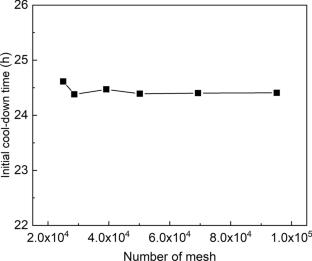Cool-down simulation of a two-stage cryocooler in magnetic resonance superconducting magnet with conduction-cooled design
Abstract
Cryogen-free superconducting magnets have become increasingly popular in research and industry. In this work, a cryogenic system was developed to realize rapid cooling of copper plate in conduction-cooled superconducting magnet applied to magnetic resonance imaging (MRI) systems. A full three-dimensional method based on the heat conduction and thermal radiation models was used for predicting heat transfer characteristics inside the device, and the effects of structural connection and dimension on initial cool-down time were also investigated. Simulation results indicated that the temperature of the copper sample plate decreased almost linearly with the increase in cooling time at first and then decreased rapidly due to the proliferated thermal conductivity of copper. The number of thermal links has less effect on initial cool-down time when the number exceeds eight. The initial cool-down time is sensitive to the spacing of the two stages of a cryocooler, with increasing efficiency by about 10% as the spacing increases from 80 to 320 mm. The larger cooling power of first-stage thermal anchor could be a key factor in boosting efficiency. The simulation results were in good agreement with the experimental data and had the potential to achieve low energy consumption and high efficiency of cooling of MRI low-temperature superconducting magnet in practical applications.


 求助内容:
求助内容: 应助结果提醒方式:
应助结果提醒方式:


